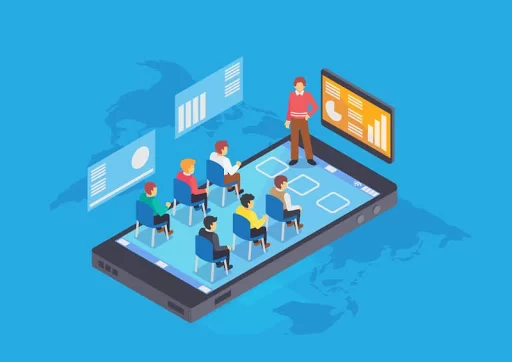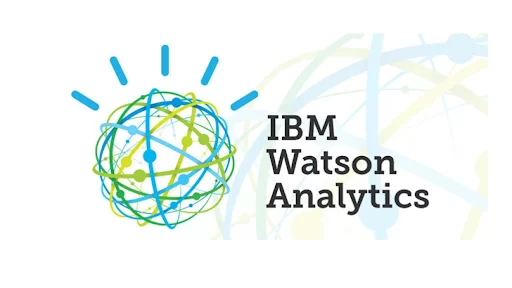We continue to explore the so-called “disruptive force” and “the next word” in modern education – its digital transformation.
To go on with the topic, we decided to dive into the trends – most discussed and impactful technologies and approaches to education that can be claimed as a part of digital transformation.
Technologies that are described in this blog post are deeply explored and used in everyday activities of Elinext, our software development company that possesses expertise in delivering e-learning products for companies worldwide.
The list of tech trends is very conditional and includes only the most impactful and well-represented technologies that have many examples of successful applications.
Internet of Things
The Internet of Things (IoT) empowers transformation for teachers and learners, enterprises, educational facility administrations, and governments.
There are many examples of smart devices applications in the process of education – from smart classroom boards to difficult online school building management systems.
Being “connected” is extremely beneficial in the learning process. Cloud devices allow tutors to have a closer look at students’ personal needs for delivering a productive teaching program.
Digital textbooks and materials reduce educational costs and erase disadvantages connected with hard copies.
The safety in schools increases as campuses are broadcast and managed with the help of tech devices. Also, such devices bring economical value. Schools in Tipp City, Ohio save approximately $128,000 each year by using a web-based system that controls all mechanical equipment inside the buildings.

Source: gcrcloud.io
IPEVO is the company that most recently manufactured a wireless interactive whiteboard that is widely presented in US schools today. IPEVO’s boards serve as a potential alternative to the SMART board that pioneered such a device back in the 90s.
There are also countless numbers of edtech startups that use IoT devices to enable digital transformation.
Take ScanMarker for example. With the help of a marker, you can quickly scan editable text from books, or other documents directly into a phone, tablet, or computer.

Source: scanmarker.com
Pure digitalization, if you will.
The IoT is an ever-emerging trend for years in the digital transformation of education. After all, 95% of undergraduate students have a device of some kind: a laptop, a tablet, or a smartphone.
Augmented Reality
Augmented Reality (AR) provides a deep level of involvement in the learning process for students.
Pokemon Go was the thing that made as call AR known to the general public. Since then, things escalated fast.
Engaging via tech works perfectly. Here are a couple of examples.
GeoGebra app is an interactive platform for elementary school that helps young students learn new topics with additional visualization. A significant improvement since my old boring geometry class.

Source: geogebra.com
AR can simulate and render objects that are abstract in concept. That makes grasping of these objects much simpler.
Pearson BouncePages is an augmented reality app with over 40 million PlayMarket downloads.
The main goal of the app is in launching interactive video animations that bring textbook pages to life. BouncePages creates an entertaining learning culture for young learners.
Also, among applications are endless video guides that make classrooms anything from ancient Greece to Jupiter landscapes.
The number of AR platforms available in AppStore and PlayMarket for educational purposes is increasing rapidly. So does SaaS AR educational market.
Personalized Learning
Personalization of learning is one of the top priorities of modern education. It is beneficial to both students and teachers. The former can set the pace of their own learning, while the latter can work on more productive work plans.
Personalized learning is also closely connected with blended and adaptive learning.
In light of digital transformation, the teaching process is often supported by some flashcards, interactive videos, adaptive space repetitions, gamified applications, etc.
Personalized learning is the top educational technology priority in the USA, as a survey by the Center for Digital Education claims.
Among the barriers that personalized learning has to overcome is an unwillingness to change over some institutions. Before personalized learning will be implemented widely, it has to eradicate the collaborative aspect that has typically been so central in school classrooms.
Gamification and Game-Based Learning
Those two often go together, but they are totally two different things.
Gamification is about badges, leaderboards, and other incentives. It is the application of game mechanics in a non-game context to promote the desired behavior of the learner.
Game-based learning, on the other hand, is training that uses game elements to teach a specific skill or achieve a specific learning outcome. You play – you learn.
Both techniques contribute to digital transformation and evolve.
Gamification integrates engagement software with existing content to motivate learners. It may be presented by adding levels, or progress bars to the content, or giving points for correct answers and placing learners on leaderboards. The whole concept is hard to imaging in a non-digital world.
To describe how game-based learning works in action, let’s dive into examples.
Banesco, a bank from Venezuela, decided that their employees need improvement in negotiation, time management, leadership, and customer service.

Source: game-learning.com
“While classroom-based classes worked on 4 or 5 skills, video games deal with over 20”, – commented Deycaris Munoz, Development and Training Manager at Banesco Panama.
They’ve ordered a game-based learning platform from an independent supplier, to work on some of the aspects of the employees’ skills.
Students used a valuable skillset to solve in-game tasks and that transfers to real-life.
Drexel University’s Senior Vice President of Online Learning, Susan Aldridge comments on the overall benefit of such a technology:
“These virtual game worlds provide a unique opportunity to apply new knowledge and make mission-critical decisions while identifying obstacles, considering multiple perspectives, and rehearsing various responses.”
Because these games are often designed to provide immediate feedback, students are motivated to keep playing them, nurturing their skills throughout the process.
Artificial Intelligence
A study published by eSchool News indicates that by 2021, the application of AI in education and learning will be increased by 47.5%. The impact of this technology will be felt from the lowest education levels through higher learning institutions.
Education organizations focus closely on individual students through the collection of data and the use of artificial intelligence to target at-risk students.
Additionally, an AI grading program removes the possibility of partiality from performance assessments, and a combination of data and AI can successfully match students with teachers that fit their learning styles.

Source: ibm.com
Big corporations also don’t stay away from AI technology. IBM and Microsoft introduce tools with machine learning to aid students in complex tasks.
Watson Analytics has the ability to answer natural language questions about an uploaded data set. Microsoft Azure training library is also built with the help of machine learning.
Conclusion
Digital transformation is working its ways across multiple domains. It is hard to follow all the latest trends, but we still try to keep up to the technologies that are being used to make our lives and education simpler, more affordable, and accessible.









